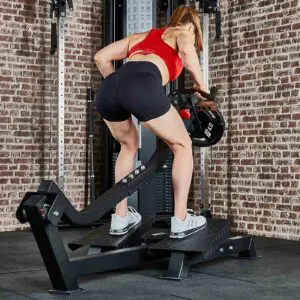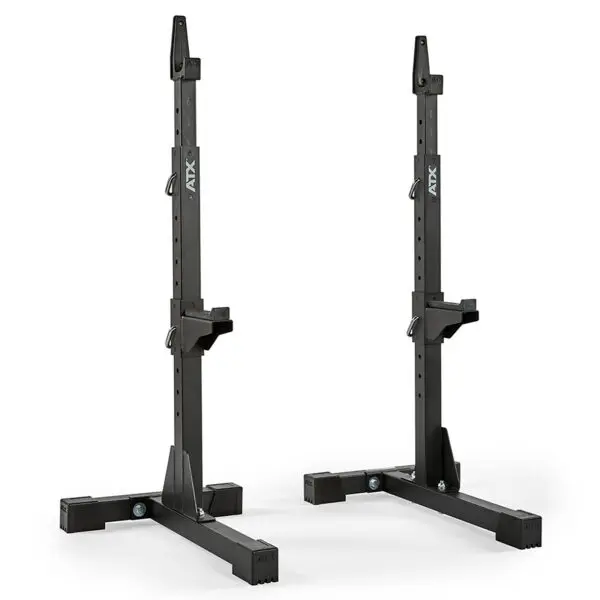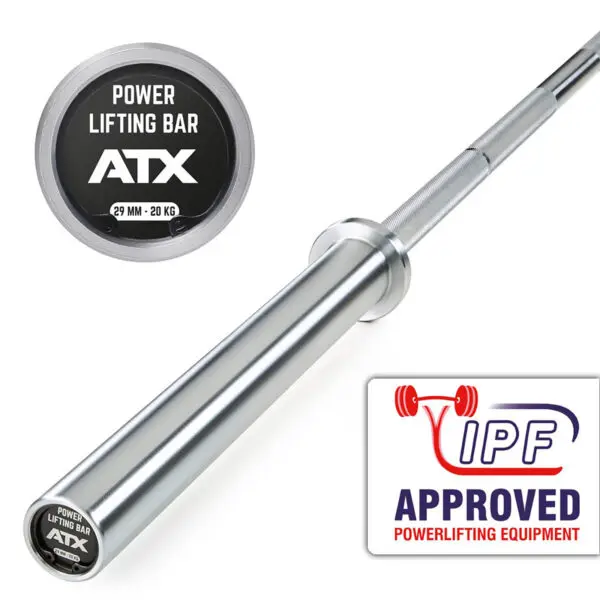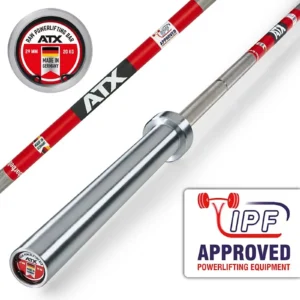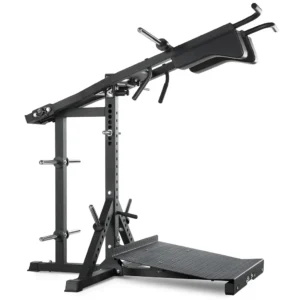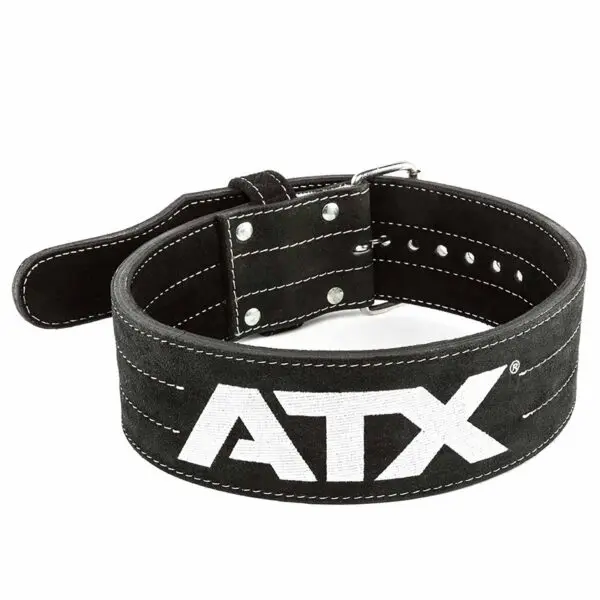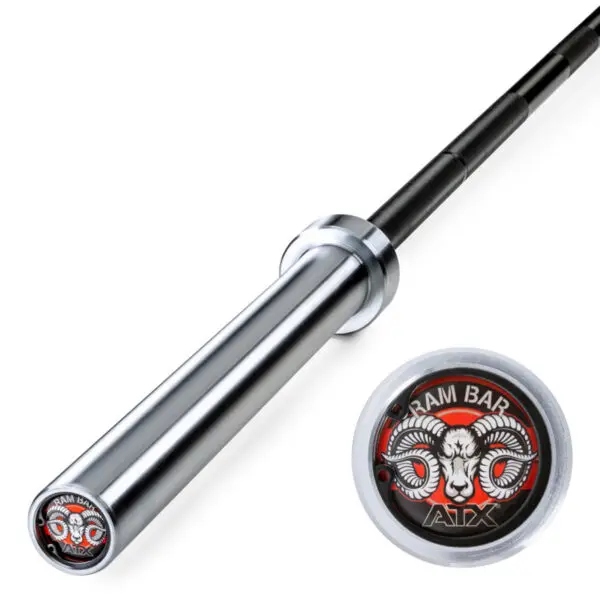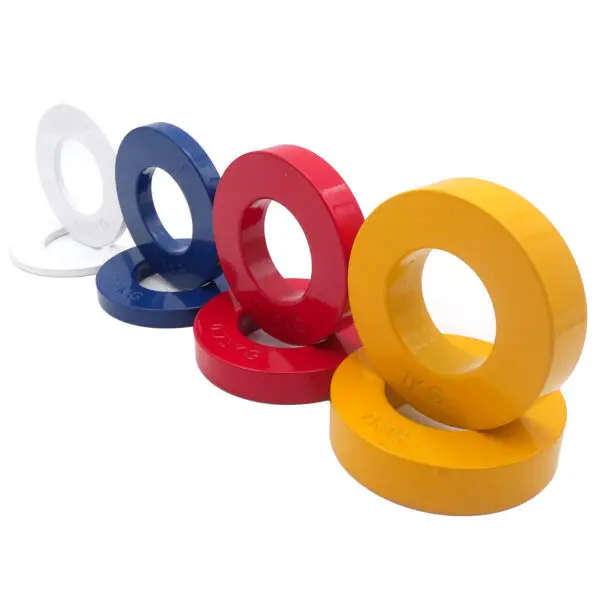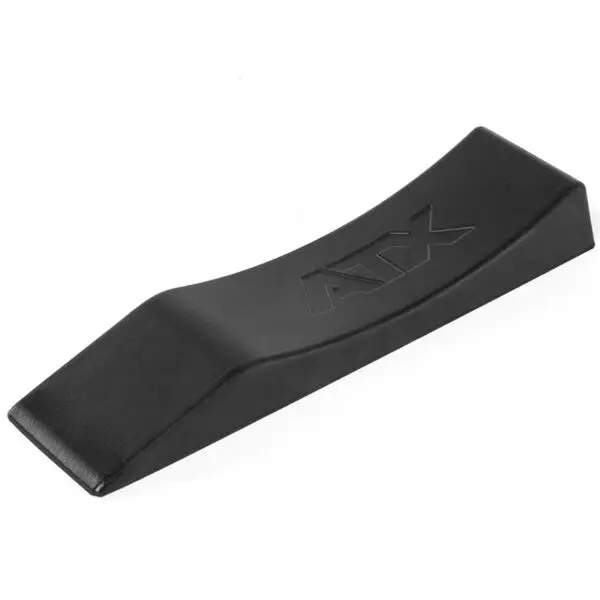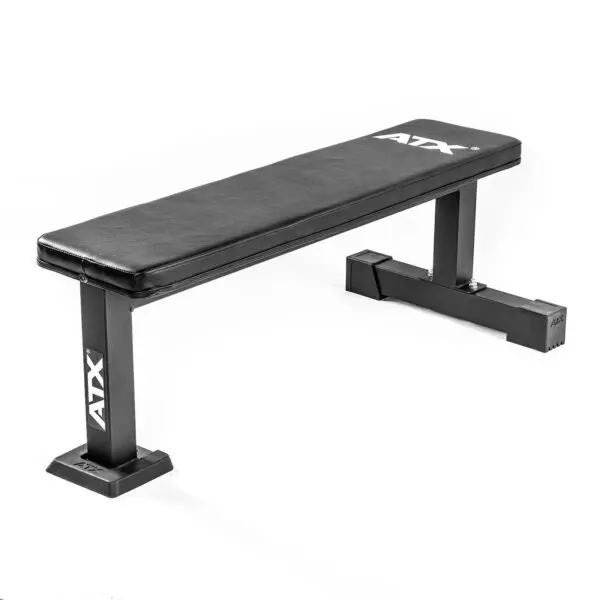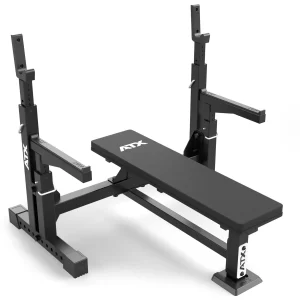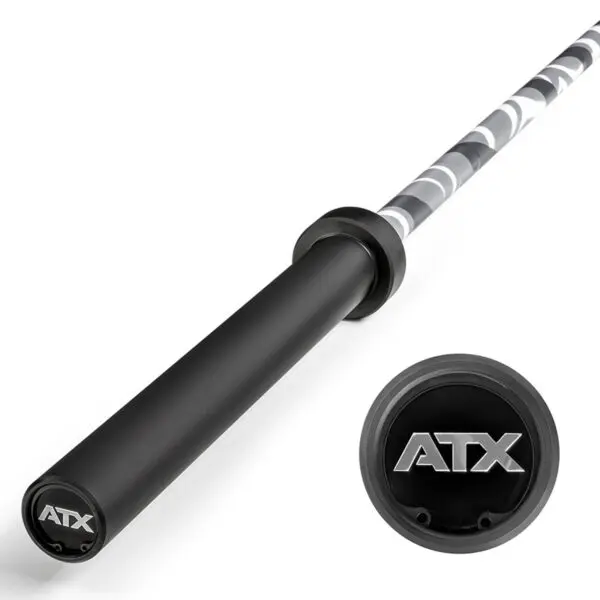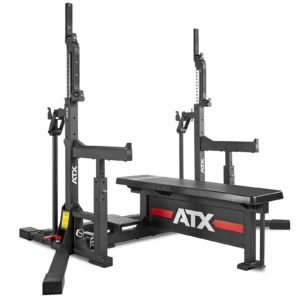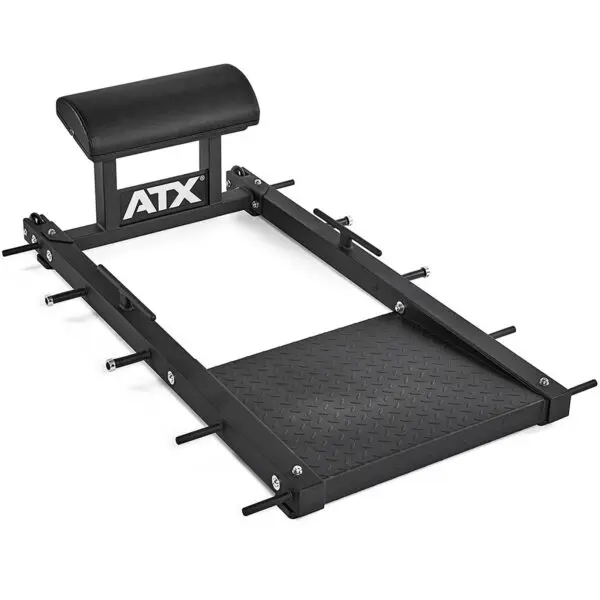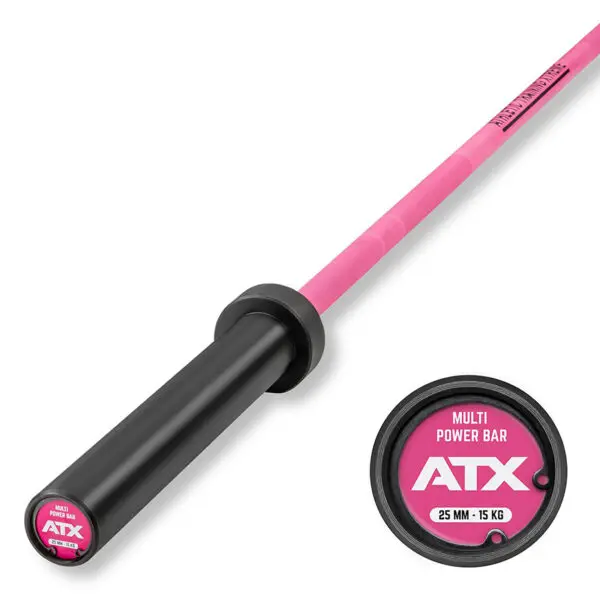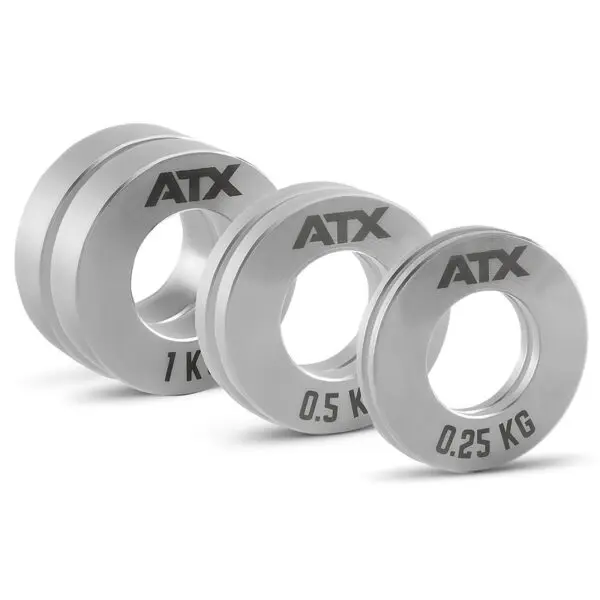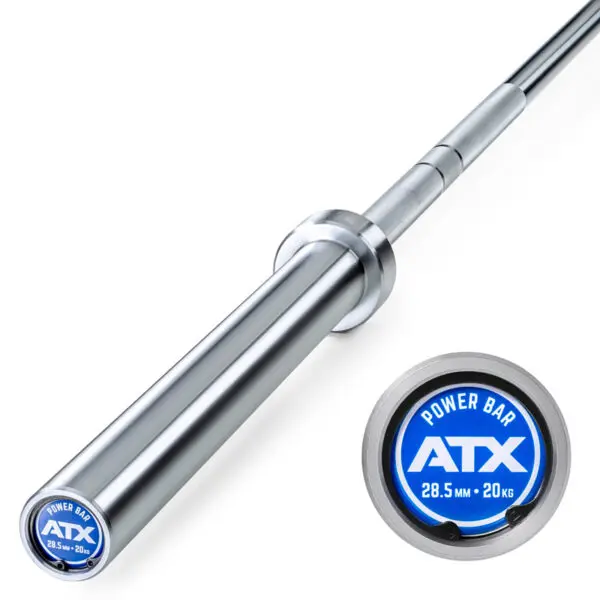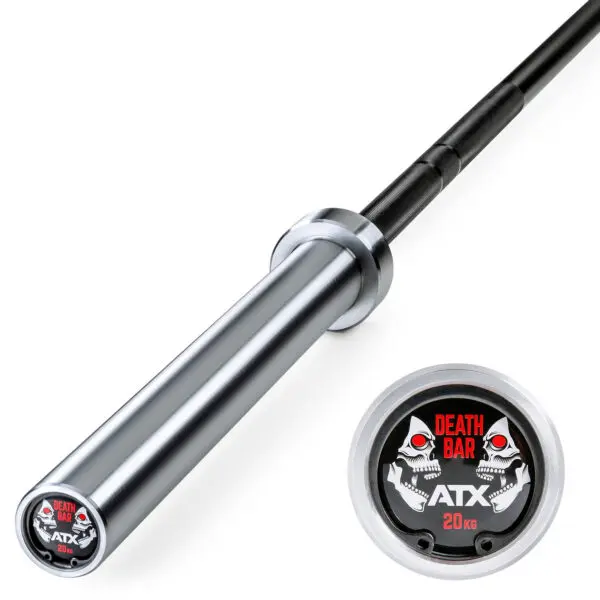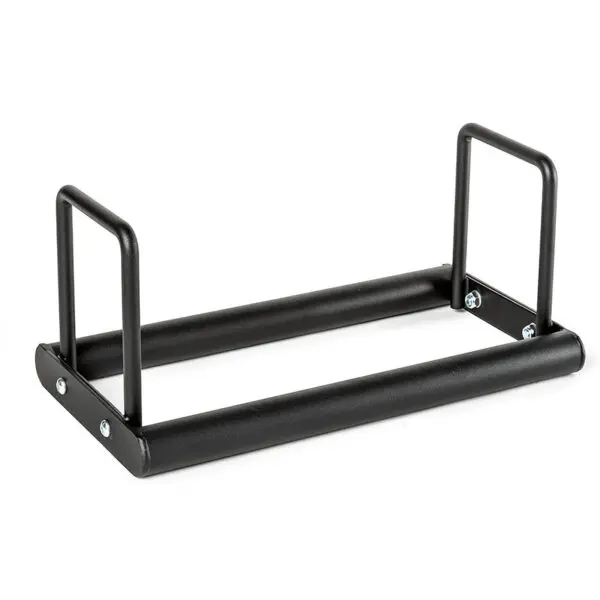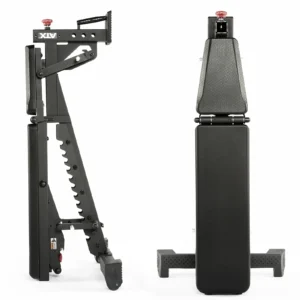
 Powerlifting Gym Equipment for Competition and Traininig
Powerlifting Gym Equipment for Competition and Traininig
Bench, Squat and Deadlift Your Way to Glory!
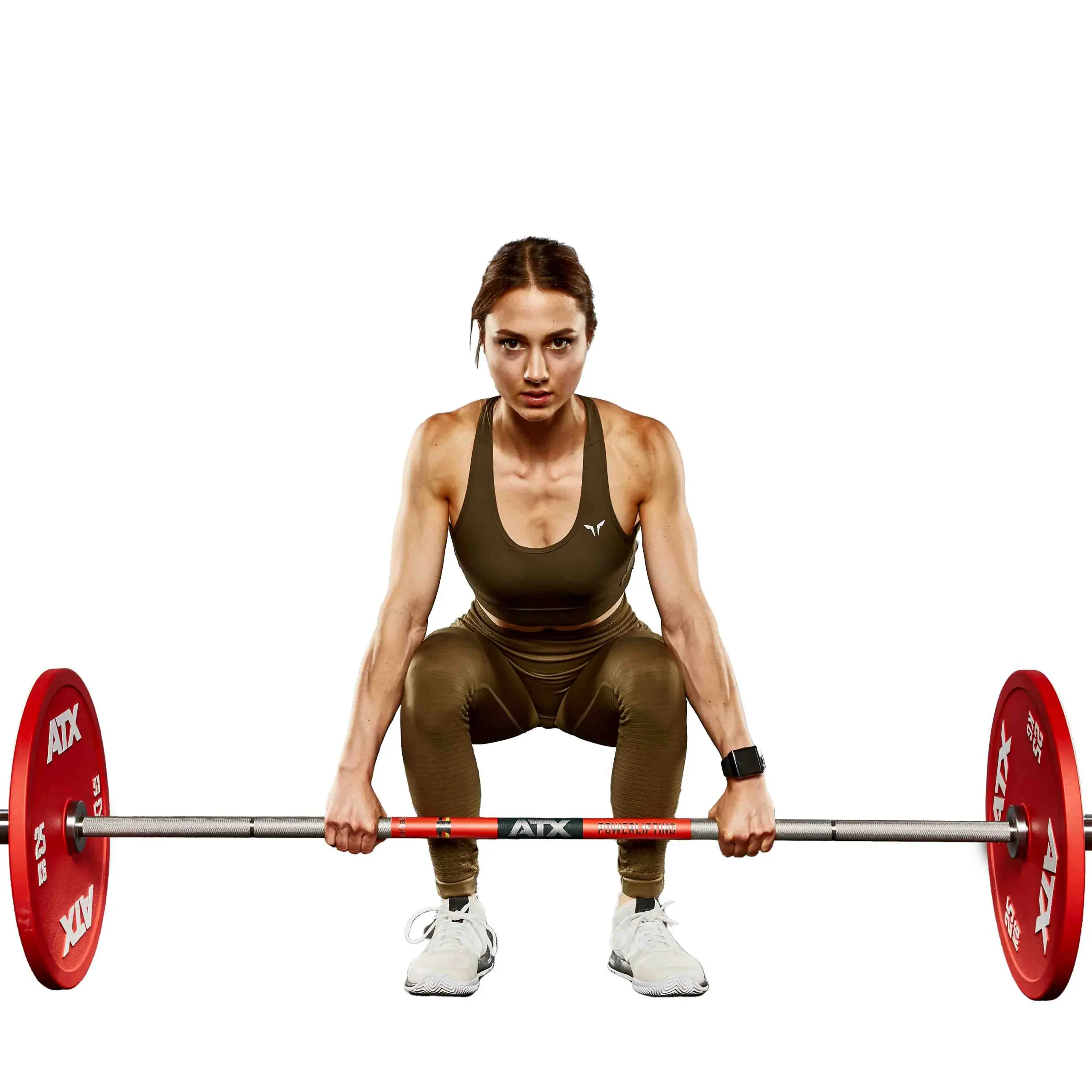
Best Equipment for Powerlifting
-
ATX® Squat Stands 510
$395.00Read more -
ATX® Lever Arm Squat Pro – Viking Press
$2,145.00Read more -
ATX® Suede Power Belt
$62.00Select options This product has multiple variants. The options may be chosen on the product page -
Power Maxx Olympic 5kg Fractional Plate Set
$55.00Read more -
ATX® Flat Bench PRO
$335.00Add to cart -
ATX® Olympic Bench Press 700
$995.00Read more -
ATX® Combo Rack IPF Approved
$3,195.00Add to cart -
ATX® Hip Thruster Bench
$575.00Add to cart -
ATX® Olympic Mini Fractional Plate Set
$86.00Read more -
ATX® Easy Bumper Plate Storage
$89.00Add to cart
Frequently Asked Questions

 Why should I start powerlifting?
Why should I start powerlifting?
Why should you start powerlifting? For starters, flexing your strength on Instagram will gain you a lot of followers. If you’re still not convinced why you should start powerlifting, here are a few reasons why I’d say, go ahead!
1. Increase your strength.
Let’s start with the obvious: powerlifting makes you stronger, probably stronger than you ever thought possible. And who doesn’t want that?
2. Improve your mental abilities.
Powerlifting will not only improve your physical abilities but also your mental strength. Powerlifting requires lots of dedication to progress past the beginner stages, if you can dedicate yourself to the gym you can dedicate yourself to anything else in your life. Additionally, lifting a weight heavier than you’ve ever lifted before is daunting, you’ll have to come up with some mental techniques to help you prepare for heavy lifting, and these techniques will aid you in other areas of life too.
3. You’ll stay fit, for longer.
Powerlifters don’t age in the same way other athletes do. In fact, many are still in their prime by their mid-30’s to 40’s. Perhaps the only downside to this sport is the fact that it will always be your responsibility to carry the shopping bags into the house.

 What basic powerlifting mistakes can I avoid?
What basic powerlifting mistakes can I avoid?
I can’t go into the benefits of this sport without saying something about the risks. It’s just as important to know what not to do as it is to know what you should be doing when you are powerlifting.
These are the most common mistakes you should avoid:
1. Don’t overload yourself.
Most people turn their backs on this sport because they failed early on and it becomes “too difficult” to continue. You don’t need to start off heavy to get results. In fact, as we’ve said before, the best results can come from you starting off light and slow. A linear progression program like starting strength is recommended for beginners, which starts with a weight you find very easy (a lot of time just the barbell), and progress by 2.5-5kg per session. This way you will be gradually progressing, but you’ll still notice the effects of your training quickly.
Eventually, you will stop progressing as quickly, this is where you need to start paying more attention to deloads and training (NOT steroid!) cycles, but it will be many months before you reach that point.
2. Don’t cheat on your sport.
If you really want to get strong, then from here on in, you need to treat powerlifting as your wife, not your mistress. It shouldn’t be competing for your attention. If you’re investing in another sport, you’re just taking time away from fine-tuning your abilities in the powerlifting realm. If you have the energy (and strength) to perform another intense activity, you might not be pushing yourself as hard as you can in this sport. This might be a good sign for you to take it up a notch.
Of course, you don’t have to give it 100% effort to make progress. The strength gains from powerlifting will compliment any other sport you do, and you can make progress even by training 3 times a week with only 30 minute sessions. Just don’t expect to break any records!
3. Don’t be a masochist.
You need to be able to tell the difference between pain and strain. Pushing through a 5×5 squat workout isn’t easy and your body won’t be thanking you throughout, but it shouldn’t cause you pain. Pain is your body’s way of warning you that injury is a real possibility. Listen to these signs and if you need to, back off.
4. Get a mentor.
Every lifter needs someone they can ask for expert advice, whether it is about their form or the right equipment for a session. Get yourself a mentor who is capable of doing just that. Having a spotter is just as important as having someone who motivates you to get your butt out of bed on a cold July morning. Choose your mentor wisely.

 What's the best powerlifting routine?
What's the best powerlifting routine?
Whether you’re looking to go pro or earn some positive reviews at your gym, you need a good workout routine to reach your goal. Of course, just about everyone has their own preferences and theories when it comes to gaining strength, but if there’s one constant thing you need to remember, it’s this: the routine you choose needs to work for you.
Beginners
It doesn’t take much to get stronger as a beginner, so you’ll be making exponential gains. For most, a 5×5 program like Stronglifts or Starting Strength is recommended. They are both very similar but have a few minor differences such as volume and exercise selection. But you shouldn’t stress your training program too much as a beginner – any form of linear progression is ideal, and your strength will grow exponentially.
Intermediate
Eventually, the linear progression will stop and you’ll stop making progress as a beginner, this is where you need to choose a program which takes into account strength periodization, such as Wendlers 5/3/1. At this stage of training, there isn’t a single program which will work for everyone, but by this point you’ll have a better idea of how your body responds to training, so you’ll have an easier time selecting a program for yourself.
Advanced
As an advanced lifter, you probably already know your strengths and weaknesses in the specific lifts, and you’re going to need a program which works on these specific goals. You may need a personal program designed just for you, or you may need to run an 8-week program which is specific to your weakest lift. Ultimately, at this stage of training you need to be smart about program selection as making any gains will be difficult, so you’re unlikely to find the answer from some random bloke on the internet.
Remember, no matter what workout you’re doing, you need to start it with a good warm up. Stretching can go a long way in preventing injury, so make sure you do your warm up exercises nice and slow. Focus on stretching those areas of your body that you’ll be targeting during your workout. For example, if you’re squatting, make sure you warm up your hips, legs and lower back. It’s that simple. You can thank me later.

 What's the best powerlifting equipment?
What's the best powerlifting equipment?
The lifting equipment you’ll use will depend on your answers to the following questions: are you training for a competition? If so, is this equipment allowed? Or are you just trying out your options to see which equipment would suit your needs?
Belt
A belt is a seriously helpful piece of equipment. Even if you end up not using it during the actual competition, they are still great to train with. This is because a good training belt helps you lift more weight with better form.
This belt supports your spine and helps you draw more strength from your core. When you’re using a belt, you’re able to push against it when you’re lifting.
There is a wide variety of lifting belts on the market, and belt selection ultimately comes down to personal preference. The material can be leather, suede or nylon, and the connection can be a lever, buckle, velcro or ratchet. Ultimately, it’s all up to you. They will all help you lift more weight, but some may be more comfortable than others. Also make sure you select the proper size!
Knee Sleeves
Knee sleeves protect one of the most important and injury-prone areas of your body. Believe me, once you’ve struggled with a knee injury, it’s hard to bounce back. Knee injuries come in many forms, including overuse and impact injuries, and you’re more prone to these when your knees are cold.
These sleeves keep your knees warm and improve the blood flow to these joints. They also ensure that your knee caps stay in place, which is very critical when you are lifting heavy weights. In other words, they can help you avoid extreme pain and knee injuries. You’ll find that you’re able to lift more weight in good form when your knees and legs are solid, and that’s exactly what these sleeves do.
Powerlifting federations are strict on which knee sleeves are allowed, so if you’re going to compete you’re going to want to check your federations allowed equipment before you go ahead and purchase some.
Knee wraps are like knee sleeves but you can wrap them tighter to give you more support and warmth. Knee wraps are only allowed in equipped powerlifting competitions, not raw competitions. But if you’re not planning on competing they can be preferrable for training use.
Wrist Wraps
Wrist wraps provide support for pressing exercises, and reduce the range of motion of your wrist. This may seem counter-intuitive, but during a heavy bench press the last thing you want is a hyperextended wrist.
Squat Shoes
Stability is something that no lifter can do without – the more stable you are, the better your form will be. And the better your form is, the more weight you’ll be able to lift, and safely at that. Yes, squat shoes might cost more than your ordinary training shoes, but they are worth it. Not only are they great for form, but they are comfortable too. When you’re squatting a few hundred pounds, you’ll likely find comfort in these shoes’ solid base.
Deadlift shoes provide much of the same benefits as that of squat shoes. If you’re getting squat shoes, you might as well invest in deadlift shoes too. Keep in mind that a quality shoe has a hard sole that allows you to get more contact with the ground so you can increase your stability and strength.
Chalk
Your grip is everything when you are powerlifting. Lifting chalk improves it – do I really need to say more?
Straps can go a long way in preventing you from losing your grip, but if you can’t use them on competition day, they’re not gonna be of much help, are they?
Don’t let your sweaty palms be the reason why you lose your grip on your barbell. Lifting chalk will help dry them right out. Some gyms can be a little testy about traditional chalk because it gets everywhere. If this is the case where you’re training, just get yourself some liquid chalk. Not only is it easier to transport, but it’s also not as messy.

 What are the various powerlifting competitions in Australia?
What are the various powerlifting competitions in Australia?
Here in Australia, the sport of powerlifting is governed by Powerlifting Australia Ltd. This organisation offers competitions on national and international levels and allows men and women to compete in lifts of bench presses, squats and deadlifts. Examples of powerlifting competitions taking place throughout the year include:
- The Obsidian Open
- Avia Summer Open
- Squat Club Open
- Equilibrium Open
For more information about the different powerlifting competitions taking place throughout the year, visit their official website at www.powerliftingaustralia.com.

 How much weight do I start with in powerlifting?
How much weight do I start with in powerlifting?
One of the most common questions beginner powerlifters ask is, how much weight do I start with? That’s really up to you. To be honest, it’s better to start with a good attitude than a good amount of weight. Even training with no weights at all can be a great way to perfect your form and technique, which I recommend you do before you slap on weight plates to your bar. But just remember overestimating your strength can lead to injury very easily, so it’s best to go slightly lighter than you think.

 How do I kickstart my powerlifting program?
How do I kickstart my powerlifting program?
Before you start powerlifting, you need to cover the basics. Start out with some lighter weights and get your form on point. Form is everything in this sport. If you have bad form, you won’t be able to lift as much as you could. Even worse, you could hurt yourself in the process. If you lift heavy weights with bad form, you might as well not have lifted at all.
What you need is a well-designed program that can help you advance every couple of weeks. To do this, you’ll either add weights or reps to your routine and continue until you can finally lift that mountain of weight you’re aiming for.

 What does Deload mean in Powerlifting?
What does Deload mean in Powerlifting?
Unfortunately, we cannot get infinitely strong. While we can dramatically improve our strength through weight training, there is a limit. Otherwise, we would all be able to eventually bench press a car. Humans constantly push the boundaries, however we are ultimately constrained by natural laws.
The bodies of powerlifters take a serious beating during the vigorous training cycles. To continue to progress and avoid injuries powerlifters go through the training phase which is called deload.
Deload refers to planned period during which they reduce both the intensity and the volume of training. This allows the body to recover from the accumulated fatigue and prevent overtraining. During this period athletes usually degrease the weight lifted by as much as 50%. Plus they also reduce the amount of sets and reps they perform. Some even take a break from training altogether.
The overall goal of deload is to give your body a chance to recover and adapt. This will lead to improved performance in the long run.

 What does the Peaking mean in Powerlifting?
What does the Peaking mean in Powerlifting?
Peaking refers to a phase during which the lifters will prepare to achieve their maximum strength. You can’t stay at your peak all year round as the training to get to your best simply takes out a bit too much out of your body.
During the peaking phase the lifters focus is switched to perfecting their technique, optimizing strength, and most importantly reducing fatigue. This is to make sure that one can perform at their best during the competition day.

 How to prepare for a Powerlifting Meet?
How to prepare for a Powerlifting Meet?
Not everyone has a powerlifting gym close to them or can afford to attend one. Powerlifting gyms are a niche facility. If you are lucky enough to have one nearby that would be your best resource for your competition prep.
If you don’t have a speciality gym nearby, don’t let that stop you from entering a competition. Entering a powerlifting competition is the best motivation for your training. The thought of making a goose of yourself on the platform is enough motivation not to skip a workout! Here is your DIY competition preparation guide:
1. Sign up to a novice meet – there is no need to splash your hard-earned money on a membership fee, entry fee, approved soft suits, belts and wraps to enter a powerlifting meet. There are a lot of local powerlifting gyms who are hosting the novice competitions multiple times a year. Try signing up for one and see if powerlifting is for you!
2. Perfect Your Form – you need to familiarize yourself with the rules of the lifts and the competition. Best way to do this is do a little bit of reading on IPF Technical Rules Book which can be found here (IPF_Technical_Rules_Book_2024.pdf (powerlifting.sport))
3. Film your lifts – the more footage you have on hand the better you will be able to track your form.
4. Try to train on similar specification equipment you are going to be competing with – stepping on stage can be a stressful experience. Last thing you want is to be thrown off guard by having to lift on the equipment you are not used to.
5. Keep your weight in check – If you weigh 87 kgs at the beginning of the training cycle, do not sign up to compete in under 83 kgs weight class, even though it may seem closer than 93 kgs. You will struggle to gain any strength in a caloric deficit. Powerlifting training is hard so to maximize recovery you will also need to maximize your calorie intake.
Remember you can only train as hard as quickly as your body can recover – it is very easy to push yourself on Monday after you’ve had a couple of days to recover from your training. Stick to your training program and avoid any deviations. It is okay to lower the weight but never to go past what is nominated. If you overtrain on Monday, then you won’t have as much energy to train on Tuesday. By the time Friday comes you will not have much energy left at all.
The most important rule you should follow is – Enjoy your training! In powerlifting you are competing against yourselves and not others. It does not matter what other people lift, just focus on your own progress. Do your best to enjoy the rather monotonous training. The satisfaction comes from seeing your numbers go up. Also don’t skip accessory exercises.

 How to break in a Powerlifting Belt?
How to break in a Powerlifting Belt?
Powerlifting belts are usually made from leather, they can be up to 100 mm wide and 10/13 mm thick. When you purchase a new belt, they can be quite stiff and almost painful to use.
The break-in process refers to softening of the leather of the belt. This almost moulds the belt to your body making it much more comfortable to use.
Unfortunately, there is no easy way to break a leather powerlifting belt in. You can try rolling it, heating it or use some Olive oil to try and soften it up.
But the best way to break a powerlifting belt in is to use it. The more you use it the quicker you will break it in. The overall timeframe will depend on whether you went for a 10 mm thick one or 13 mm thick one as well as how frequently are you using it.
The break in process is so annoying that some of the lifters refuse to change their belts for this specific reason! Pain and discomfort are part and parcel of lifting weights. If that is an issue you could maybe try some Zumba or Jazzercise.

 What do Powerlifters Snort?
What do Powerlifters Snort?
You are attending your first powerlifting meet. Right before the lifters hit the platform, many will take a good whiff of something in a little plastic container. It can be a little confronting and confusing to the uninitiated. What the hell is going on here? Are they on the nose beers or something?
Powerlifters snort Smelling salts or Ammonia before heavy lifts. It helps the athletes to increase alertness, focus as well to psych themselves up before the lift. The strong ammonia scent can stimulate the nervous system and provide a jolt of energy.
In saying that, the use of smelling salts in powerlifting is a rather controversial subject. Some claim that it poses health risks and could be considered a borderline substance abuse.
While it is unhealthy to do it continuously, plenty of people have been doing it for years in competition. Before you try it, you must familiarise yourself with the potential risks. Becoming reliant on something like this to perform in the gym day to day would be unhealthy. Not to mention you would look like a bit of a clown if you were having a snort before you do a set of side lateral raises!
Powerlifting Training Tips


How Heavy Dumbbells do I need?
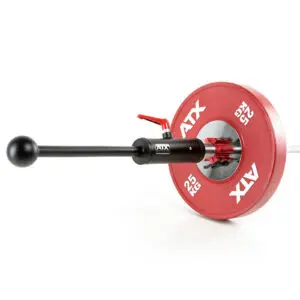
What Happened to the ATX-CAL Club Barbell Attachment?

Which Weight Plates Should You Buy? A Simple Guide for the Average Lifter

ATX-PRX-620 Power Rack Comparison
